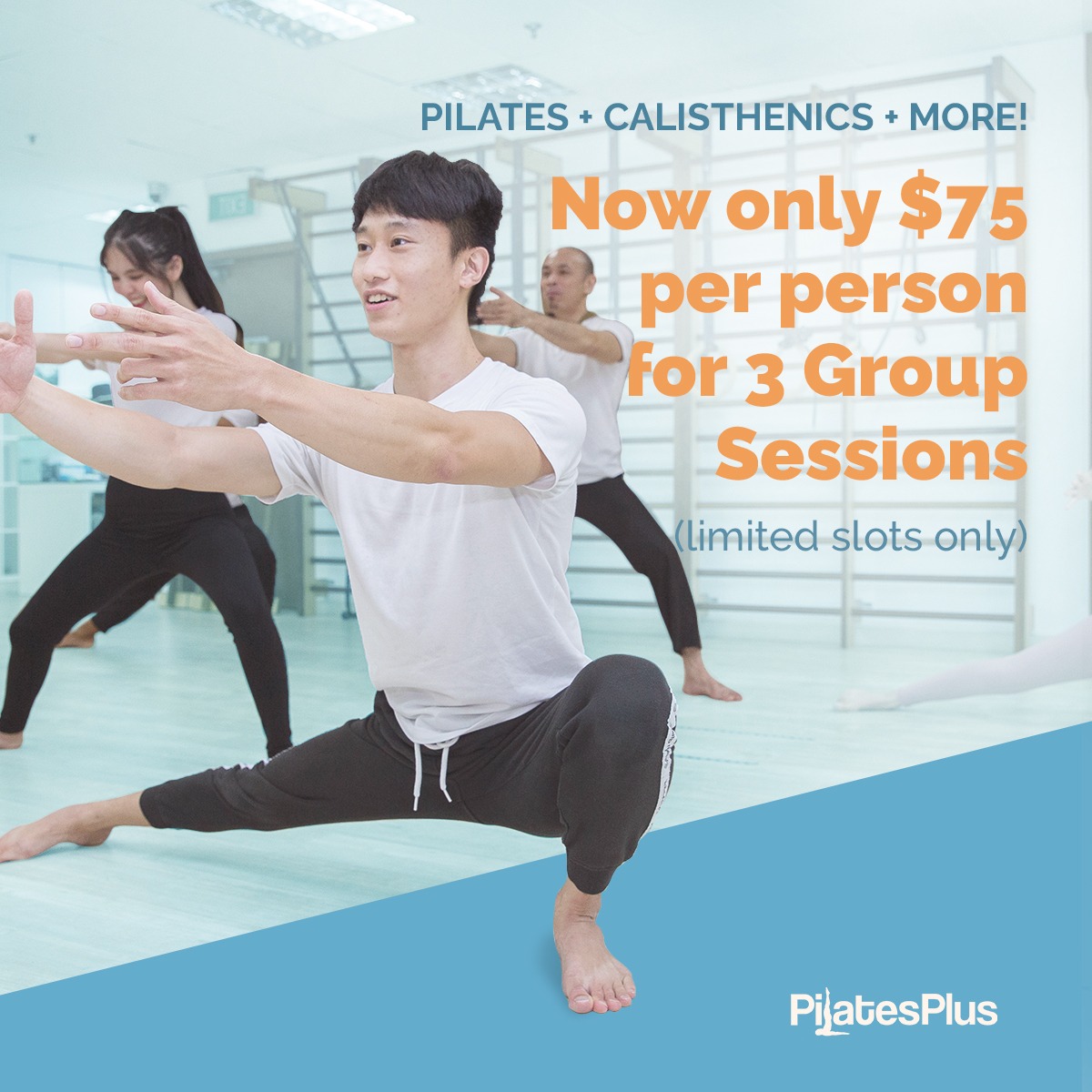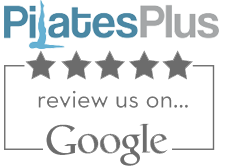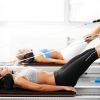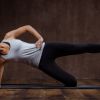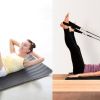Pilates for Rounded Shoulders: 7 Exercises You Need to Do!

As our lifestyle has revolved around sitting in front of the computer or browsing on our handphone most of the time, rounding of the shoulders has become a more common postural problem not only with the older population but with the younger group as early as in their teens. Correcting this posture will not only make you look better and taller, but it will also help you avoid aches and tightness in the shoulder and neck area.
Pilates exercises can help you correct rounded shoulders and your overall posture. There are specific Pilates movements designed to stretch the tight areas on your chest and upper back. At the same time, you can do exercises that strengthen your spine and shoulders muscles to align your posture better.
Let us examine deeper what the rounded shoulder is to understand what exercises we can do and how does it help to correct it.
What is a rounded shoulder or hunch upper back posture?
A rounded shoulder posture is a position of the upper body where the upper spine is rounded forward (flexed thoracic spine); at the same time, the shoulder blades are rolled to the front of the torso. Your chest is caved-in in relation to your shoulders and this posture will most likely bring the head forward (Neck hyperextension) in relation to the body resulting in a forward head posture.
According to this article by MedicalNewsToday, these common daily tasks in the list below may contribute to rounded shoulder posture:
- using a smartphone or tablet
- using a computer or laptop
- sitting for long periods
- driving a vehicle
- bending over repeatedly
- carrying heavy objects all-day
Here are the 4 steps on how we will correct the hunch back posture.
1. Stretch the tight muscles rounding your shoulder
One of the main causes of a bad posture is having one area of the body to be overly tight, pulling some parts of the body out of alignment. In this case, it’s the chest muscles that are pulling the shoulders forward causing it to round. Here are 3 stretches we can do to correct this.
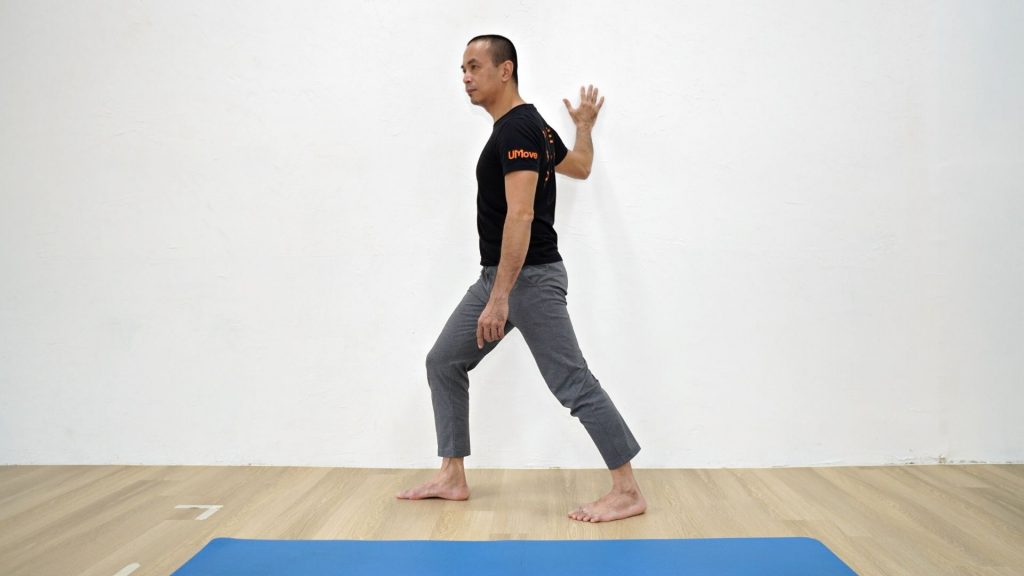
- Wall chest stretch
Stand up with your right side facing the wall, with your right foot in front. Place your right hand on the wall with a bent elbow and turn facing away from the wall.
Hold the stretch for 30 to 60 seconds and repeat for the other side. Do the stretch for 2 sets.
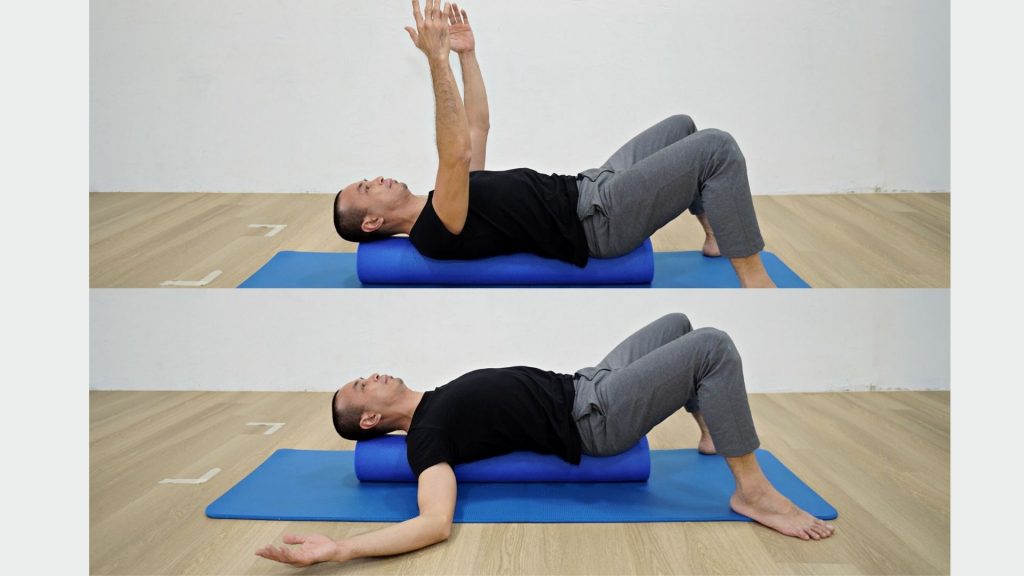
- Foam roller open to W stretch
Lie down lengthwise with your back on a long foam roller. Start with both arms raised to the ceiling with your elbows slightly bent.
Open your arms down to the side, aiming to touch both elbows and hands to the floor,
It’s ok if you can’t touch the floor at first, but just keep aiming for it.
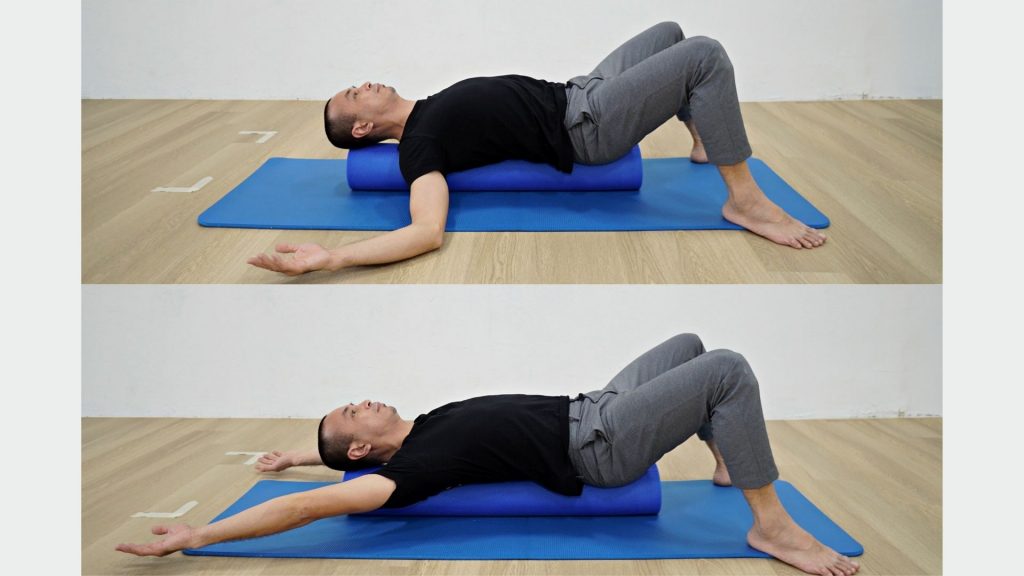
- Foam roller W to Y stretch
This is a continuation of the W-stretch. Once you are at the lowest point of your W-position, gradually bring your arms overhead into a Y-position.
Aim to keep your elbows and hands as close as you can to the floor as you go to the Y position.
A good modification for the W-stretch and the W to Y Stretch is to carry a light object like a 2-lb dumbbell or a water bottle on both sides. Relax and allow the weight to stretch your chest muscles instead of resisting it. Breathe deeply as you are in the stretch position to relax the muscles further. Avoid arching your back when doing these 2 stretches.
Do all of these stretches slowly and find the angle that you find the most resistance and add a pause to that position to deepen the release.
2. Mobilize the thoracic spine into extension
The other biggest factor why our shoulders round is because of the thoracic spine or your upper back. The thoracic spine starts from where your ribs are attached all the way up to around shoulder level. Our thoracic spine is rounded forward in nature; it is part of the natural curvature of our entire spine.
But the problem arises when we are spending too much time sitting at our desks or using our mobile phones. And at the same time, we rarely extend our thoracic spine the other way. This will cause the front part of the spine to get stuck, and we need to open it up regularly to remind the body that it can be opened. Here is a very effective stretch to do just that.
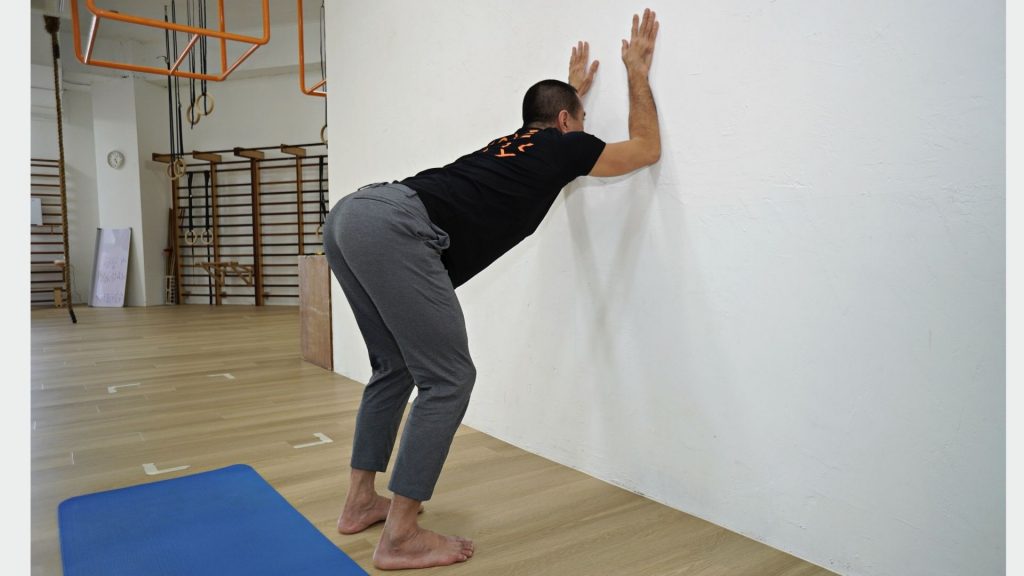
- Thoracic extension stretch on wall
Start standing facing the wall around 1 to 2 feet away from it.
Bend forward and place your forearm on the wall trying to keep it parallel.
Keep your abdominals tight and your lower back flat or rounded if possible so we can isolate the stretch on your upper back.
Now, try to extend your thoracic spine by lifting your chest upwards without moving anything else.
You can go in and out of the stretch to understand it better and hold it for 15 to 30 seconds on the final rep.
This stretch displays a very small movement, yet it is a very effective one when done correctly. Pay attention to the details to learn it properly.
3. Strengthen the weak muscles to open up the shoulders
In order to correct the hunchback posture, stretching the tight muscles will not be enough to correct it. You need to activate and strengthen the opposite muscles that got weakened over time. Here are 2 exercises you can do to strengthen the upper back muscles.
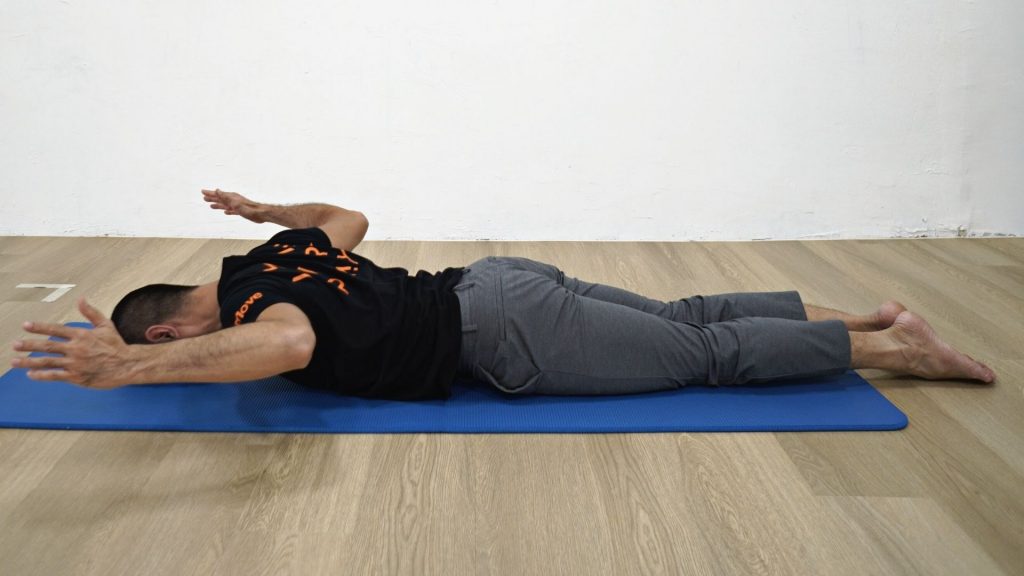
- Prone W retraction and external rotation
Lie facing down on your mat with your arms forming a W-shape.
Lift both arms off the floor, keeping the W position without arching your back.
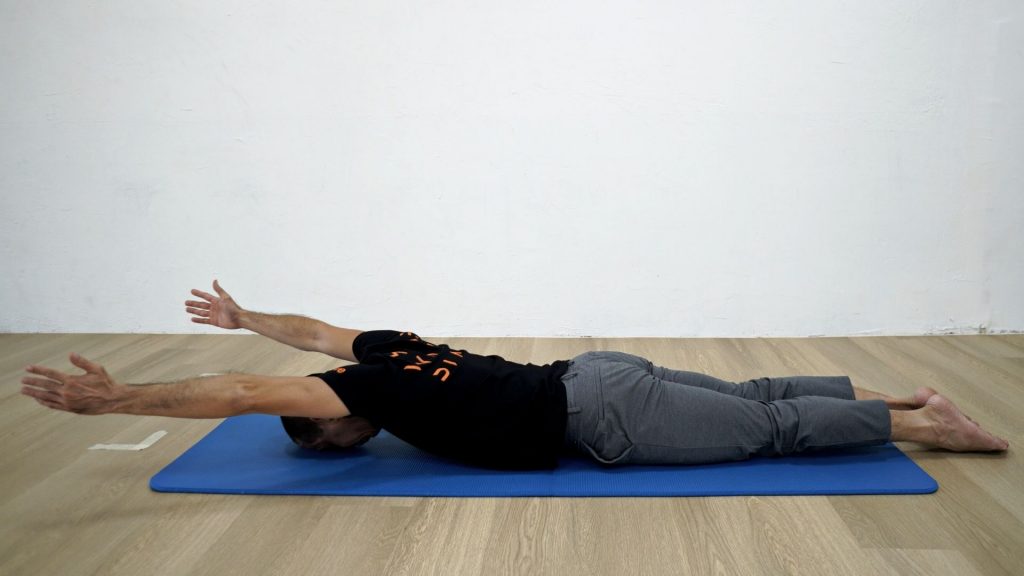
- Prone W to Y
This is a continuation of the Prone W exercise, where you straighten your arms into a Y shape after you lift it up on a W shape.
Aim on raising the arms higher as you go into the Y position. It will be challenging, especially if you are tight with your shoulders. It will improve over time as you keep stretching your shoulders on the foam roller shoulder stretches.
Prone W and Prone W to Y exercises can go to the lower back if not done well; here are some points to consider to do it correctly:
- Keep your face, chest, and legs down the whole time; it is very tempting to lift them higher at the end range of the movement.
- Engage the abdominal muscles as you lift the arms to the W position.
4. Strengthen the back muscles that extend the thoracic spine
The final part to correct your rounded shoulder posture is to strengthen the muscles that extend your thoracic spine. You will see visible results after doing a good thoracic spine extension stretch but the change will not be permanent unless you pair the stretch with a good strengthening work on your upper back muscles.
Here is a good exercise to target the thoracic extensor muscles.
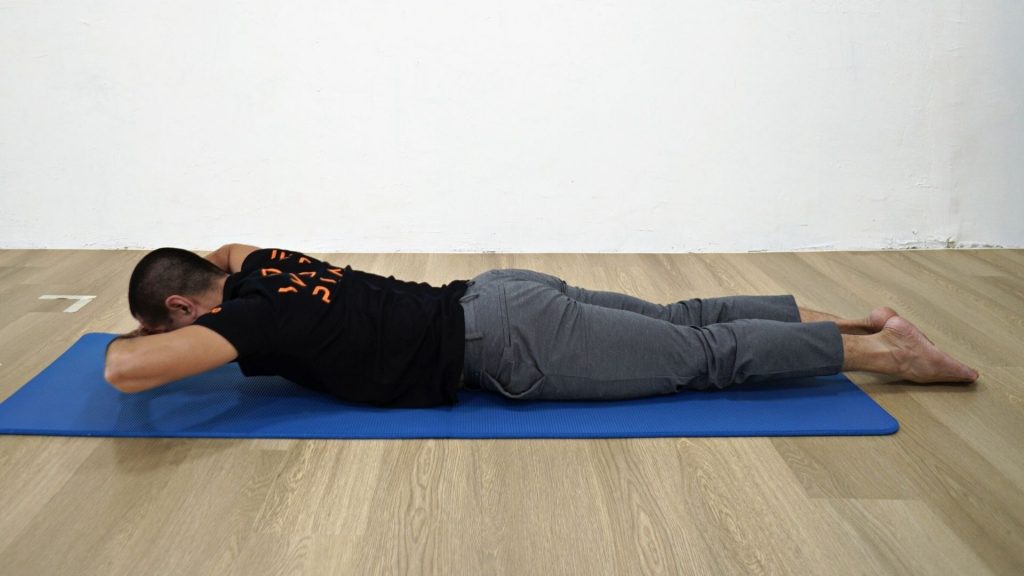
- Prone thoracic extension
Lie facing down on your mat with your forehead just resting on the back of your hands.
With your abdominals engaged, lift your chest, face, hands, and elbows off the mat.
Keep your neck in line with the spine and focus on lifting your chest off the mat and, at the same time, lifting your elbows higher.
Both legs should stay down the entire time.
Daily routine you can do
Let me put together the exercises into one routine so you can just simply follow it regularly. Remember to pay attention to the details of each exercise, as this will be the key to effectively do them.
As you do all these exercises, it is important to incorporate breathing to benefit fully from the movement. Here is an article I wrote about Pilates breathing so you can understand it better.
Warm-up:
Here is a neck and shoulder warm-up routine that I have on my YouTube channel, which you can just follow along. It is good to do easy, general movements on your shoulders and neck before going on specific corrective exercises.
| Exercise | Reps and sets | |
| A1 | Wall chest stretch | 30 seconds per side for 2 sets |
| B1 | Thoracic extension stretch on the wall | 10 reps and hold for 10 seconds on the last rep |
| B2 | Foam roller open to W stretch | 10 reps |
| B3 | Foam roller W to Y stretch | 10 reps of slow and deep movements |
Repeat B1 to B3 for another round.
| Exercise | Reps and sets | |
| C1 | Prone W | 5 reps and hold 3 seconds at the top every rep |
| C2 | Prone W to Y | 5 reps and hold 3 seconds at the end of the range |
| C3 | Prone thoracic extension | 3 reps and hold 10 seconds every rep |
Repeat C1 to C3 for another round.
Remember that postural correction is a perpetual work that never ends. This corrective routine will help you get started but you will need to really commit to change your posture for good and apply this new alignment into how you move daily. See you in the next post.



